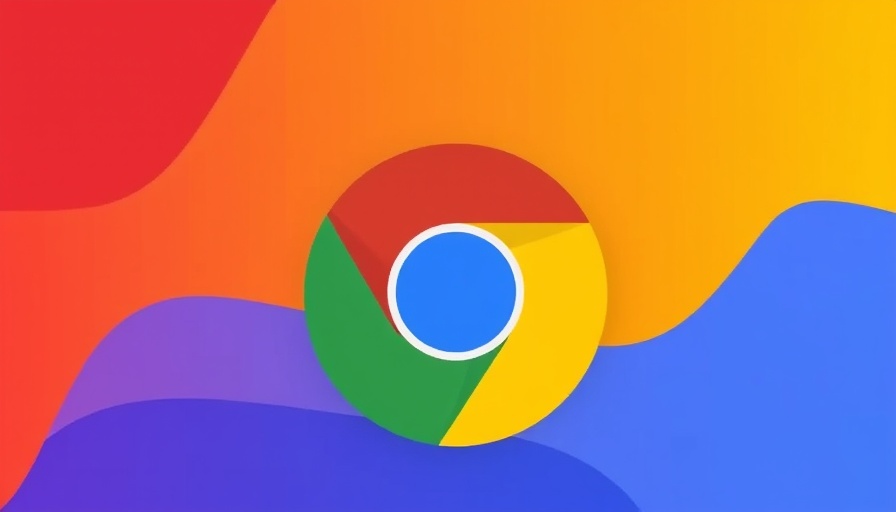
Understanding the Importance of Emulating Googlebot
In today's digital age, the landscape of web development has dramatically shifted from simple HTML pages to complex JavaScript-heavy websites. For small and medium-sized businesses wanting to boost their online visibility, this change presents both opportunities and challenges. One critical challenge involves ensuring that everything Googlebot sees on their site is optimized for crawling and indexing.
As a vital part of technical SEO, emulating Googlebot using tools like Chrome allows businesses to uncover potential discrepancies between what users see and what search engines can access. This process not only aids in potential SEO audits but also helps identify rendering issues that may lead to hidden content or missed rankings.
How to Set Up Chrome for Googlebot Emulation
Setting up Chrome to view your website from Googlebot's perspective is easier than many think. Here’s a simple guide to get everything going:
- Download Chrome or Canary: If you don’t already have Google Chrome installed, you'll need this browser. Alternatively, you can opt for Chrome Canary, a beta version that includes new and experimental features.
-
Open Developer Tools: Press
Ctrl + Shift + I(Windows) orCmd + Option + I(Mac) to access Developer Tools. - Change User-Agent Settings: Within the DevTools, navigate to the Network tab. Uncheck the “Use browser default” option under User-Agent and select “Googlebot Smartphone” from the dropdown.
- Reload the Page: After making these changes, refresh the webpage. You can now see what Googlebot would see when it crawls your site.
What to Look for During a Googlebot Audit
Performing an audit while emulating Googlebot can reveal several insights about your website's technical SEO:
- Content Visibility: Ensure that Googlebot can access and index the content you want to promote.
- JavaScript Rendering Issues: Identify whether there are delays or failures in rendering JavaScript, which can affect your rankings.
- Navigation Differences: Compare the navigation structure for users versus bots to ensure consistency.
- Blocked Resources: Make sure there are no files or assets that Googlebot may not have access to.
- Geolocation Redirects: Check if the website redirects based on location, potentially isolating non-US users or bots.
Why Spoofing Googlebot's User-Agent Matters
Spoofing Googlebot's user-agent string is essential because it allows businesses to accurately test how their site performs under the crawler's conditions. For instance, if a business’s website serves different content based on the user-agent, examining how Googlebot sees the site directly influences indexing decisions. Understanding this can inform urgent fixes and optimizations, significantly boosting search visibility.
Common Pitfalls and Solutions for Googlebot Rendering
One common issue to be aware of is client-side rendering problems. When a site relies heavily on JavaScript, Googlebot may not render key content immediately. This lag can result in delays before the new content appears in search results. To mitigate such risks, it's advisable to use a combination of tools, such as Screaming Frog SEO Spider along with Google’s URL Inspection tool, to provide corroborating evidence on how the site is seen by Googlebot.
Moreover, understanding how Googlebot handles user interactions—such as permissions—plays a crucial role in troubleshooting. Since Googlebot doesn’t process requests for permissions like webcams or geolocation, any content contingent on these permissions may end up invisible to crawlers.
The Future of Technical SEO and Googlebot Emulation
Moving forward, as websites continue to evolve with increasing reliance on JavaScript frameworks, the ability to effectively emulate Googlebot will become even more essential. For small and medium businesses, keeping abreast of these evolving tools and methodologies will be critical for maintaining visibility in search results.
By familiarizing themselves with the intricacies of how to view their website as Googlebot does, these businesses can stay ahead in the competitive digital landscape. With tools and best practices readily available, the landscape for optimizing websites for both users and search engines continues to expand.
Call to Action
If you want to ensure your website is easily accessible and indexable by search engines, set up your Googlebot emulation today! Implementing these tips will help you troubleshoot issues, improve your site’s performance, and enhance your overall SEO strategy.
 Add Row
Add Row  Add
Add 



Write A Comment